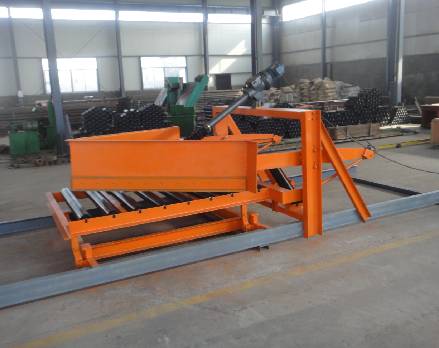 Afrikaans
Afrikaans  Albanian
Albanian  Amharic
Amharic  Arabic
Arabic  Armenian
Armenian  Azerbaijani
Azerbaijani  Basque
Basque  Belarusian
Belarusian  Bengali
Bengali  Bosnian
Bosnian  Bulgarian
Bulgarian  Catalan
Catalan  Cebuano
Cebuano  Corsican
Corsican  Croatian
Croatian  Czech
Czech  Danish
Danish  Dutch
Dutch  English
English  Esperanto
Esperanto  Estonian
Estonian  Finnish
Finnish  French
French  Frisian
Frisian  Galician
Galician  Georgian
Georgian  German
German  Greek
Greek  Gujarati
Gujarati  Haitian Creole
Haitian Creole  hausa
hausa  hawaiian
hawaiian  Hebrew
Hebrew  Hindi
Hindi  Miao
Miao  Hungarian
Hungarian  Icelandic
Icelandic  igbo
igbo  Indonesian
Indonesian  irish
irish  Italian
Italian  Japanese
Japanese  Javanese
Javanese  Kannada
Kannada  kazakh
kazakh  Khmer
Khmer  Rwandese
Rwandese  Korean
Korean  Kurdish
Kurdish  Kyrgyz
Kyrgyz  Lao
Lao  Latin
Latin  Latvian
Latvian  Lithuanian
Lithuanian  Luxembourgish
Luxembourgish  Macedonian
Macedonian  Malgashi
Malgashi  Malay
Malay  Malayalam
Malayalam  Maltese
Maltese  Maori
Maori  Marathi
Marathi  Mongolian
Mongolian  Myanmar
Myanmar  Nepali
Nepali  Norwegian
Norwegian  Norwegian
Norwegian  Occitan
Occitan  Pashto
Pashto  Persian
Persian  Polish
Polish  Portuguese
Portuguese  Punjabi
Punjabi  Romanian
Romanian  Russian
Russian  Samoan
Samoan  Scottish Gaelic
Scottish Gaelic  Serbian
Serbian  Sesotho
Sesotho  Shona
Shona  Sindhi
Sindhi  Sinhala
Sinhala  Slovak
Slovak  Slovenian
Slovenian  Somali
Somali  Spanish
Spanish  Sundanese
Sundanese  Swahili
Swahili  Swedish
Swedish  Tagalog
Tagalog  Tajik
Tajik  Tamil
Tamil  Tatar
Tatar  Telugu
Telugu  Thai
Thai  Turkish
Turkish  Turkmen
Turkmen  Ukrainian
Ukrainian  Urdu
Urdu  Uighur
Uighur  Uzbek
Uzbek  Vietnamese
Vietnamese  Welsh
Welsh  Bantu
Bantu  Yiddish
Yiddish  Yoruba
Yoruba  Zulu
Zulu Exploring the Benefits of Wing Pulley Lagging for Improved Performance and Durability
Understanding Wing Pulley Lagging
In various industrial applications, the efficiency and reliability of conveyor systems are paramount. One critical component in these systems is the wing pulley, which plays a significant role in reducing friction and wear during the operation of conveyor belts. To optimize the functionality and lifespan of wing pulleys, lagging materials are often employed. This article explores the significance of wing pulley lagging, its types, benefits, and maintenance practices critical for ensuring a smooth operation.
What are Wing Pulleys?
Wing pulleys are specifically designed pulleys used in conveyor systems that consist of a central hub with two wings or arms extending outward. The design minimizes the buildup of material around the pulley, which can create drag and reduce efficiency. The wings provide improved material release, reducing the chances of material spillage around the conveyor system. These pulleys are generally used in heavy-duty applications where durability and performance are essential.
The Importance of Lagging
Lagging refers to the application of a layer of material onto the surface of the pulley. This layer functions as a protective shield and offers several advantages that ultimately enhance the performance of the wing pulley. Here are some key reasons why lagging is essential
1. Enhanced Traction The primary purpose of lagging is to increase the friction between the pulley and the conveyor belt. This enhanced traction ensures better grip, significantly minimizing slippage and optimizing the overall efficiency of the system.
2. Wear Resistance Lagging materials are designed to withstand harsh environments and abrasive materials. By protecting the pulley from wear and tear, lagging extends the life of the conveyor system, reducing maintenance costs and downtime.
3. Noise Reduction The right lagging material can help in dampening noise produced during the operation of the conveyor. This is particularly important in settings where noise levels must be controlled for worker safety or environmental reasons.
4. Protection Against Environmental Factors Lagging can offer added protection against various environmental factors, such as moisture, extreme temperatures, and chemical exposure, further prolonging the life of the wing pulley.
Types of Lagging Materials
Several types of lagging materials can be utilized with wing pulleys, each offering unique advantages. Some of the most common include
wing pulley lagging

- Rubber Lagging This is one of the most popular lagging materials due to its excellent wear resistance and good traction properties. Rubber lagging is versatile and can be used in various applications, providing effective performance over time.
- Ceramic Lagging For applications involving highly abrasive materials, ceramic lagging is often preferred. The ceramic tiles provide exceptional durability and significantly enhance the wear resistance of the pulley.
- Polyurethane Lagging This material offers a balance between flexibility and toughness. Polyurethane lagging is resistant to tearing and provides good traction, making it suitable for various environments.
- Metal Lagging In some cases, metal lagging may be satisfactory for specific applications due to its high strength and wear resistance. However, metal lagging is not as commonly used as rubber or ceramic.
Maintenance Practices
To ensure optimal performance from lagged wing pulleys, regular maintenance is essential. Here are some best practices
- Routine Inspections Conduct periodic inspections to verify the condition of the lagging. This includes checking for signs of wear, such as cracking, peeling, or separation from the pulley surface.
- Cleaning Keep the pulleys clean from buildup materials or debris that may affect the performance and lead to unnecessary wear.
- Replacement When lagging shows signs of damage or wear, timely replacement is key to maintaining the efficiency of the conveyor system.
Conclusion
Wing pulley lagging plays a vital role in the overall functionality and efficiency of conveyor systems. By enhancing traction, improving wear resistance, and providing protection against environmental factors, the right lagging material can significantly extend the lifespan of wing pulleys. Understanding the benefits, types, and maintenance requirements of pulley lagging will help industries optimize their operations, reduce downtime, and ensure smooth material handling processes. Investing in quality lagging is a smart choice for any organization aiming for operational excellence.
-
Revolutionizing Conveyor Reliability with Advanced Rubber Lagging PulleysNewsJul.22,2025
-
Powering Precision and Durability with Expert Manufacturers of Conveyor ComponentsNewsJul.22,2025
-
Optimizing Conveyor Systems with Advanced Conveyor AccessoriesNewsJul.22,2025
-
Maximize Conveyor Efficiency with Quality Conveyor Idler PulleysNewsJul.22,2025
-
Future-Proof Your Conveyor System with High-Performance Polyurethane RollerNewsJul.22,2025
-
Driving Efficiency Forward with Quality Idlers and RollersNewsJul.22,2025





























